Blood and Valor: Part 1- Preview of the Western Front Armies
The upcoming Great War game Blood and Valor from covers many different theaters of the conflict and when talking about the forces and factions in the game it is best to detail the force lists in relation to where and at what time they are found in the Great War.
Players will see that the forces in are balanced to fight against all other forces in the game, so it may be fun to have East African German Askari fight against US Doughboys just to see what would happen. The first book for Blood and Valor covers the fighting on the Western Front, Gallipoli, the Near East and East Africa. This article will give you an idea of what forces are in play for the Western Front.
Basic List Composition
The scale and scope of the game is a skirmish fight at the platoon level, with some support elements added in for both realism and flavor. The basic organization of every unit in the game is a command element of an officer and two additional models and two core rifle squads of 4-12 riflemen.  Depending on the list and period these squads can be experienced or inexperienced. In later periods of the war you can swap out a model for an LMG and another for a rifle grenadier. Other than this many squads can be equipped with grenades or explosives.
Depending on the list and period these squads can be experienced or inexperienced. In later periods of the war you can swap out a model for an LMG and another for a rifle grenadier. Other than this many squads can be equipped with grenades or explosives.
The next unit seen in every list is the HMG teams made up of a gun and a 3-man team. This is considered a support unit. The last support unit seen almost universally (US lists, however, do not have this) is the sniper.
The other unit which is played off board that every list has is an artillery barrage that can only be used once per game. Other units make an appearance on some lists based on historical usage such as gas barrages, cavalry, trench catapults, flamethrowers and infantry support guns. Also players can take extra rifle squads to support their core units so you can build a very powerful force to have fun with.
 Core Units
Core Units
1 x Command Team
2 x Riflemen Units
Support Units (when available)
Note: The amount of units you can take for each of these support options vary by nationality. The number below show averages thought all of the lists in the game. Some are not available for a particular force at all or only during certain periods of the war.
0-4 Additional Rifleman Units
0-2 HMG
0-3 Close Combat/ Assault units
0-1 Sniper
0-2 Artillery Barrages
0-1 Gas Barrage
0-1 Flamethrower
0-1 Infantry Support Gun/ Trench Catapult team
0-2 Cavalry Units

Early War: The Guns of August
Any student of the Great War knows that the fighting in the early stages of the war was vastly different to the stalemate that existed on the Western Front. In order to give players the option to play these battles of maneuver and to get colorful French models on the table, the developers decided to add a way for gamers to translate the forces used in the later period of the war into the forces of the early part of the war on the Western Front.

As you can see in the picture above, you have less options with a 1914 force which matches how your basic squad looked like in 1914 and use the same stats as the late war units for the nations appearing in 1914. Cavalry is also added here since they were used for scouting and fighting (often dismounted) during the maneuver warfare of 1914. They add an interesting dynamic to the game that leverages their mobility on the battlefield.

The forces you can pick from are the Germans, French, British and the Belgians which only appear in the early war and is the only dedicated list for this period. The Belgians were a late add and contain some unique units with fun special rules such as cyclist troops, HMGs pulled by dog teams and artillery support from the fortress guns at Liege. The cyclist troops are also the only close combat unit in early war. They also have a unique hero character, Captain-Commandant Van Damme who distinguished himself at the battle of Halen. I think the Belgians will be a great list to play and I may have to add them to my already huge collection of 28mm figures.

The other change in early war is that the British can only utilize the more expensive Regular Rifle Squads to give the flavor of the professional BEF which by the end of the year was non-existent and was made up of reservist and volunteers.
All the forces used in 1914-1915 have a different appearance that troops later in the war. Aside from the colorful French uniforms the German Pickelhaube and the soft caps of the BEF are iconic for this period.
Gamers will have to determine based on what battle they are playing in 1915 as to the applicability of the early war force structure.
Mud, Blood and Stalemate
Many historians have claimed that modern warfare started in the trenches of 1916, my take on this is that the classic warfare seen in the previous century died in the trenches along with the many of the young men of this generation. In this period you have the 4 main combatants of the war represented, the Germans, British, French and Americans. This section of the book is a main focus of the game and also represent the first box sets that will produce for Blood and Valor.
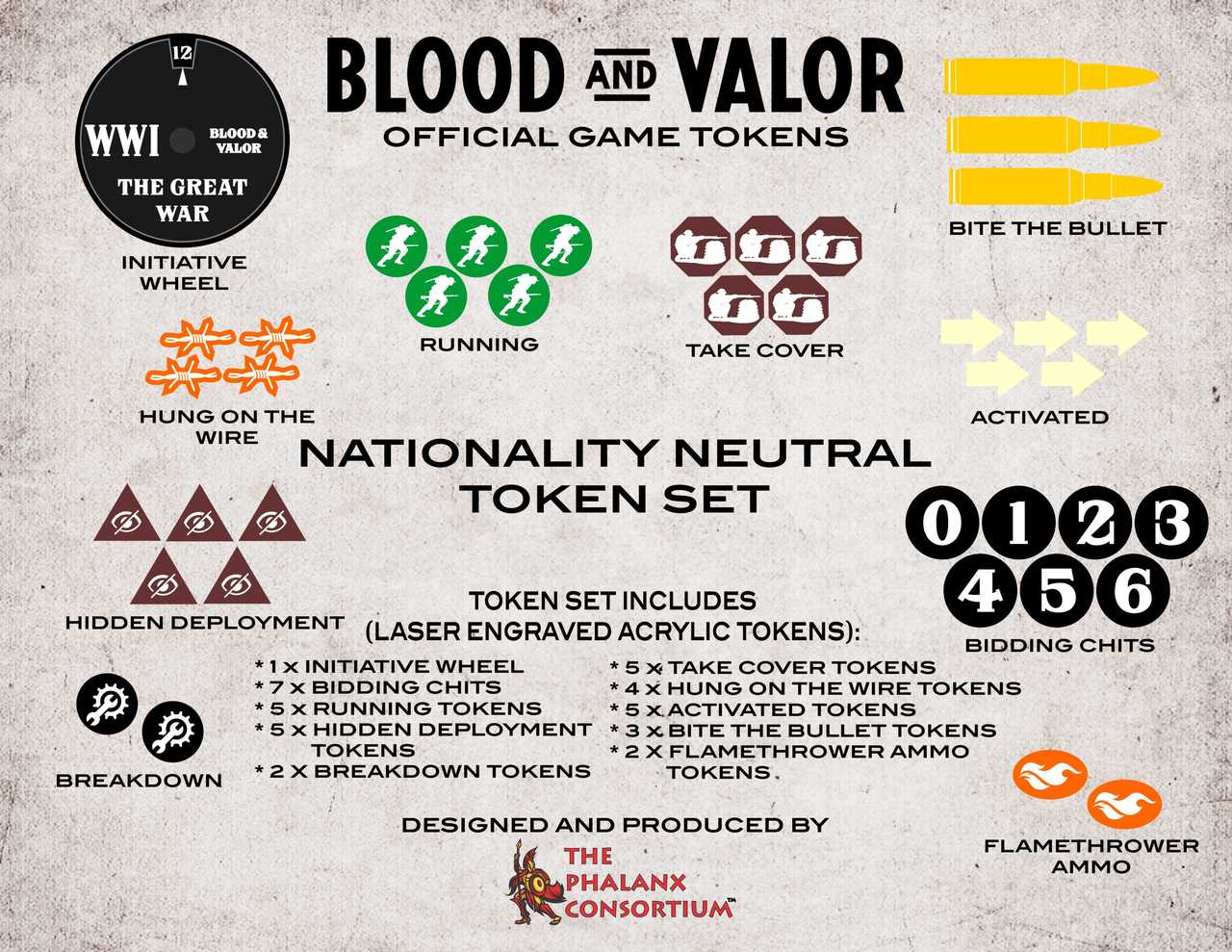
Before we move into the late war forces it is time to bring up the three types of forces you will play with the most. As stated before, most nations have two types of Riflemen units, regular and inexperienced. Besides the obvious difference in stats the only other difference is that the inexperienced units cannot take rifle grenades or LMGs. It’s not so much that these units didn’t have these weapons, but more because of their capability to use them well and to make the difference between them and the regular troops play a bigger difference in the game.
Since tactical commanders used new troops differently it was decided to add this distinction to the game.
The assault troops represent soldiers in smaller squads trained in close combat such as German Stosstruppen or trench raiding parties. These troops get some special rules to achieve their designed missions and are able to use grenades for no extra charge.

Some gamers who still hear the guns of 1918 may ask why the developers made the three types of units for the game. The answer is simple, because it gives the novice Great War players a simple unit blueprint to follow and for the rivet counting gamers the ability to create historic platoons with the appropriate teams and squad sizes. Not every gamer wants to play with the standard British New-Army platoon for 1 July 1916 however folks that do should know how to easily recreate this unit with how the force selection is structured.
Vive La France
France played host to much of the fighting during the war and the toll it took upon the country affected it for generations since. In the game the French represent one of the most diverse and interesting forces in the game.
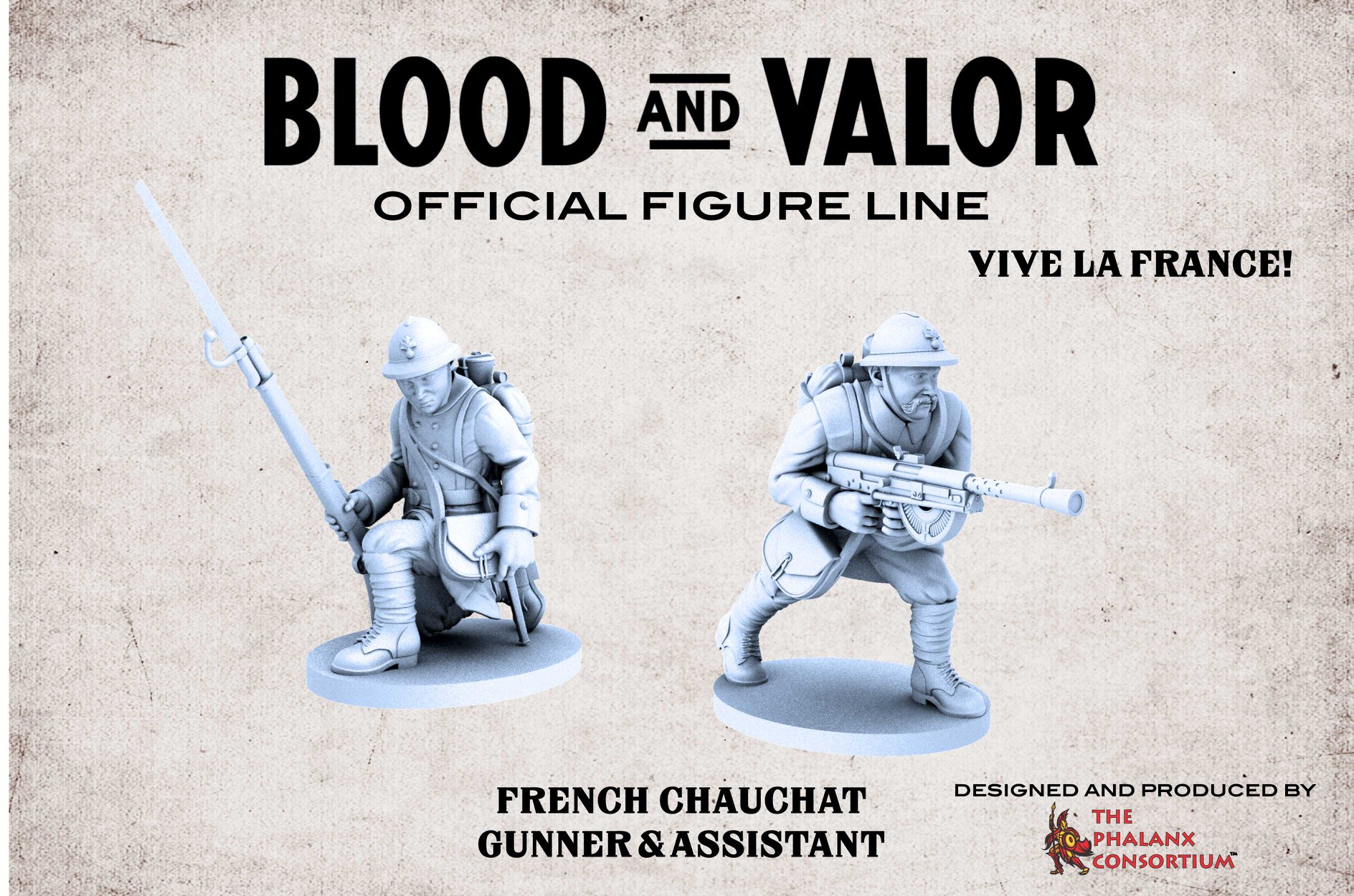
The French come with two Lieutenant Colonel hero characters; Emile Driant the hero of the first day of the Verdun Offensive and James Waddell, a French Foreign Legionnaire who hailed from New Zealand. Both of these heroes like the others in the game give you a feel of what these men contributed to the war. The French force is constructed like most of the other late war armies in the game with some interesting differences. The can have one 37 mle 1916 cannon in their force mix that can make quick work of an HMG nest.
The most interesting part of the French force are the options for assault troops. You can pick regular French trench raiders, Senegalese raiders or Harlem Hellfighters which features Private William Henry Johnson who was known for his bravery in combat and earned the moniker “Black Death”.
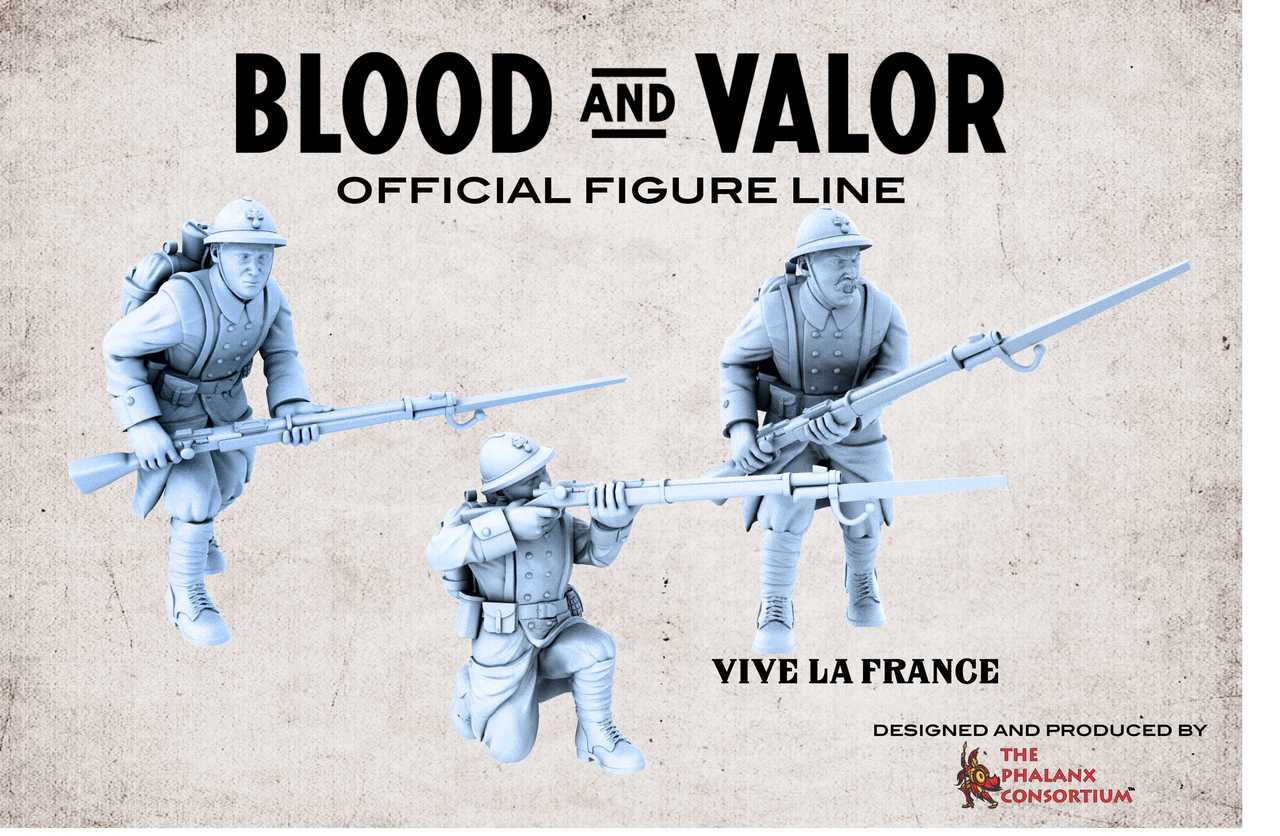
All French forces also get the Elan special rule which helps them recover from Fatigue faster.
The Old Contemptable’ s
The British are a very aggressive force, getting the For King and County special rule which makes them tough in assaults. They also get the most special characters in the game which represents heroes from all over the Commonwealth. Gamers should bear in mind that these British lists represent all of the various types of troops that fought for the King during the Great War.
When it comes to leadership you can take The Australian Edgar Towner or the English JRR Tolkien who think became more famous after the war. You can build a regular rifle squad around the Welshman CSM John Henry Williams that really adds some neat special rules or replace your sniper team with the First Nation Canadian Francis Pegahmagabow.
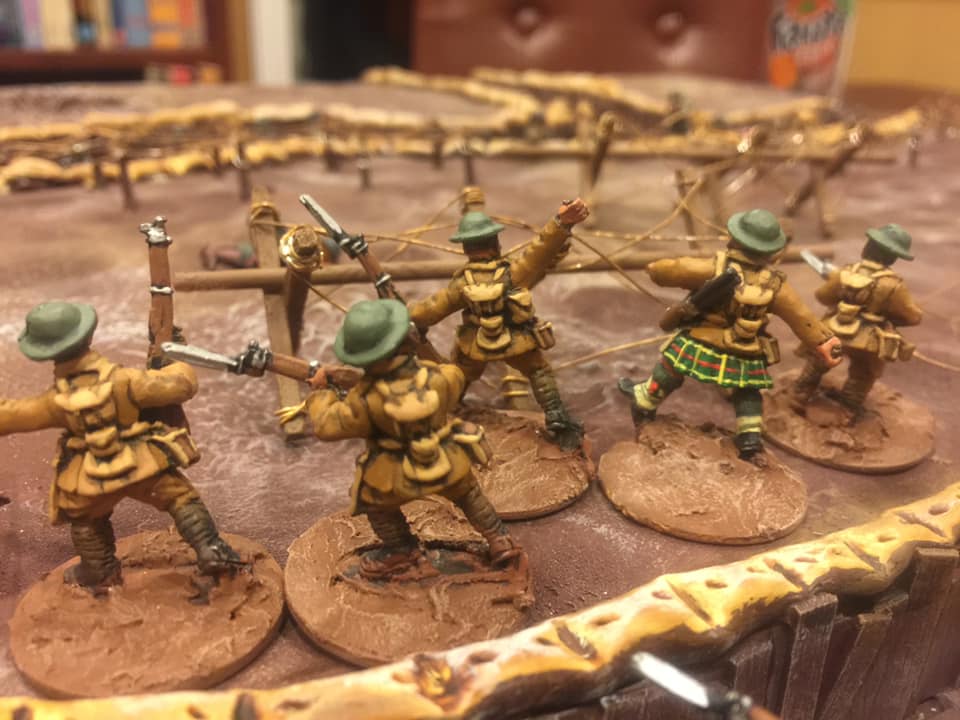 For assault troops you can take regular trench raiders, Gurkhas or kilted Scots; once again all of this adds to the flavor of the game. Players will see that some assault options cost the same, and their inclusion was to give gamers options with a wide variety of forces that were used during the war.
For assault troops you can take regular trench raiders, Gurkhas or kilted Scots; once again all of this adds to the flavor of the game. Players will see that some assault options cost the same, and their inclusion was to give gamers options with a wide variety of forces that were used during the war.
The Doughboys
Despite their late entry in the war the US played a major role in ending the conflict due to the fact that the sheer manpower they could ship to France made the war unwinnable for the Germans.
The US gets the We have something to prove special rule which lets them re-roll resolve tests which will come in handy. They also get as many heroes as the British with some very historic names.

You can “find” Maj. Charles Whittlesey commanding your force or use Lieutenant Samuel Woodfill to lead your troops into battle. Much like CSM Williams above, US players can build a squad around Sgt Alvin York, or have the Marine Sergeant Dan Daley commanding an HMG gun team.
Unlike the other nations in the game, the US does not get multiple types of close combat teams but they do get the French 37 mle 1916 cannon to play with.
“Des Allemandes”
What would the Western Front be without the Germans? In Blood and Valor the Germans gain the Blut und Stahl special rule which allows them to re-roll saves in close combat.
Unlike the other nations in the game, the Germans get three hero leaders to choose from; Ernst Junger, Johann von Ravenstein and a Hauptman destined for greater fame in a second great war called Erwin Rommel.
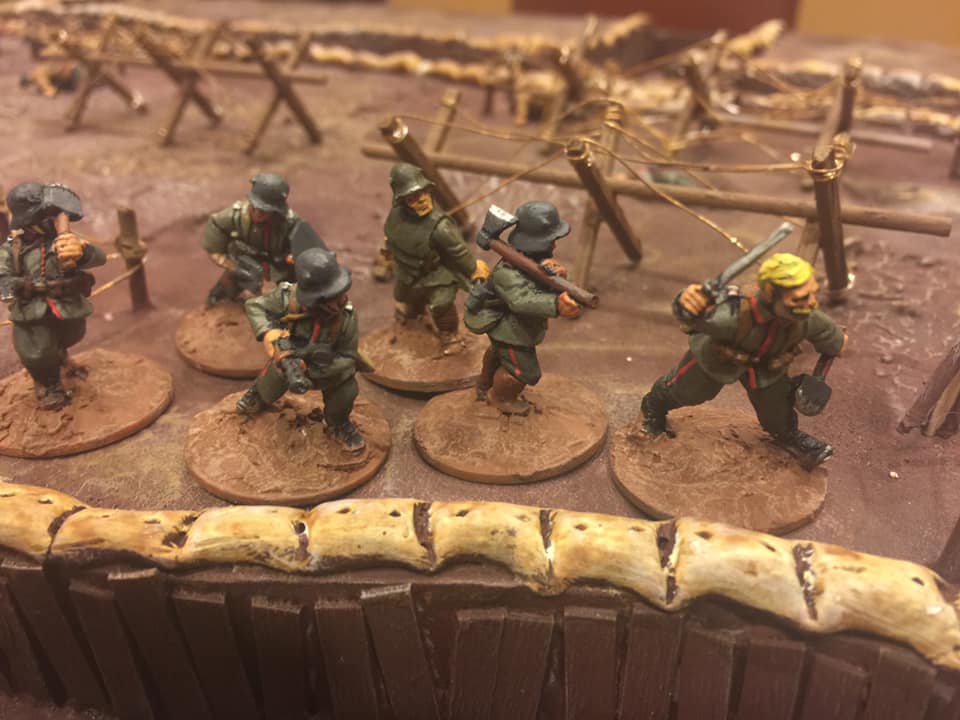
The Germans only get one type of close combat unit, but hey they are Stormtroopers who are the only unit allowed to use sub-machine guns in the game. For extra heat in battle they can also use a flamethrower team and are the only nation that can take such a unit.
Wait But What-about
As you can see you get a lot of different forces to use in Blood and Valor and this is just one of four theaters that come in the first book.
I have been a gamer and game developer for years and I know what many of you are thinking right now and based on what I have seen on social media I can assume it goes like this; “you forgot the Canadians” or something like “But the French had flamethrowers too” and of course “Gurkhas in 1918, wrong!”
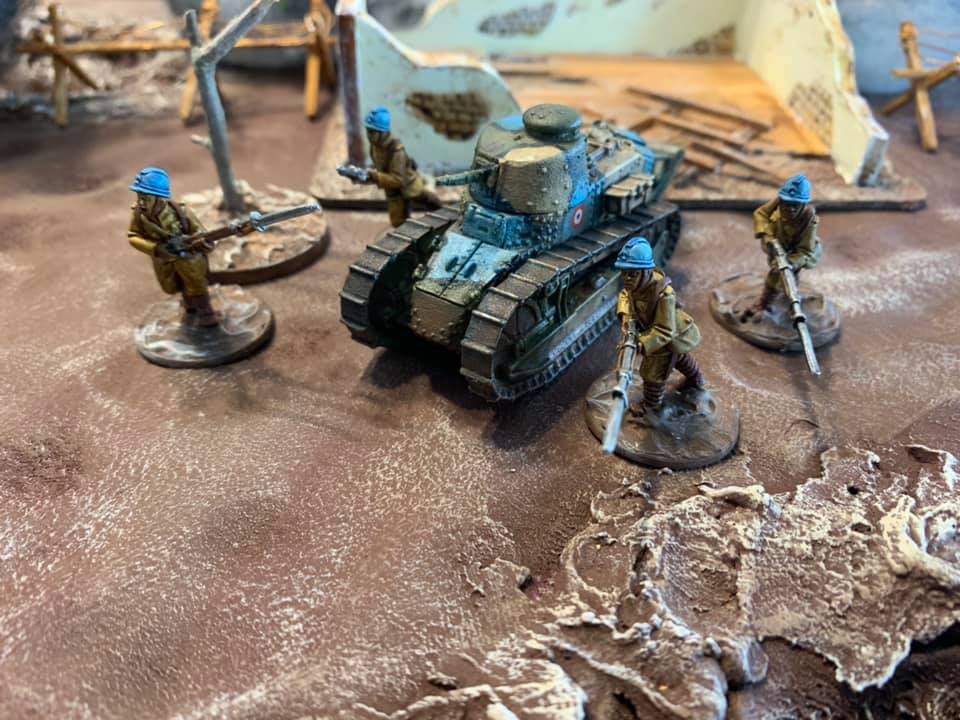 First of all it’s a game and the developers tried to cover the basics forces that were represented in the war since that is the number one goal of any game developer. The other forces were picked for either flavor or personal interest of the writer and the game was never intended to cover every unit that fought in the war.
First of all it’s a game and the developers tried to cover the basics forces that were represented in the war since that is the number one goal of any game developer. The other forces were picked for either flavor or personal interest of the writer and the game was never intended to cover every unit that fought in the war.
Also the development team went with a major combatant flavor vice a factional one. So for gamers who are upset that the Canadian Corp and ANZAC’s aren’t in the game here I would say that they are and the fact that the Commonwealth has a special rule that makes them aggressive represents their inclusion along with some of the heroes hailing from all over the Empire.
Same for the French Foreign Legion and the US Marine Corps who were elements of the larger forces they fought for and while they may have had some differences, they were not enough to make an entirely new force for the game. Some folks may have wanted to play an entire force as the Harlem Hellfighters vice just a close combat unit. My answer to this and the above questions is to paint your troops however you want since many of these differences in forces are very subtle.
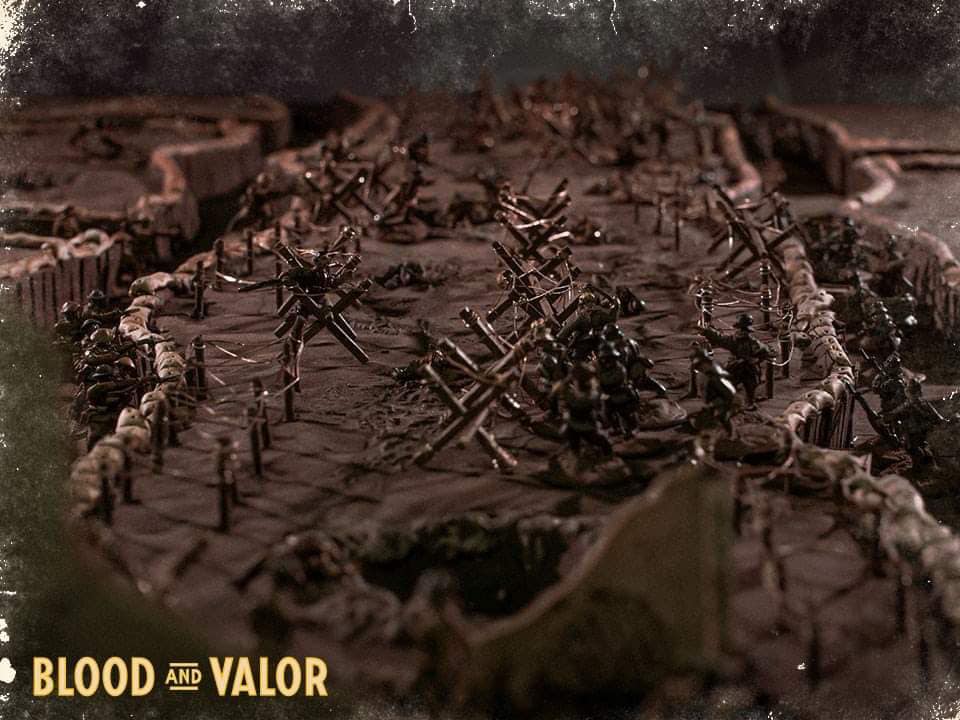
This last point illustrates one thing about our hobby that gamers forget; gamers play a role in games. When a question was asked online about the lack of Canadian troops, the poster was upset until I reminded him that he can model his troops as Canadians and play them as Canadians since he had the knowledge to do such.
Same for the USMC and same for the French Foreign Legion, paint and play your force how you want, Rufus and Kai will not come to your house and take your dice away, but they did give you a great game system to play your favorite Great War Battles.
Stay tuned to NDNG for the next installment where we cover the fighting in East Africa and don’t forget to pick up the book on preorder The FAQ from Firelock is

“…and the Belgians which only appear in the early war …”
Is there a reason for this? The Belgian army fought during the whole war, after the country was overrun ny the German army, they defended part if the river Yser til 1918.
Would be good to see a later list for them too.
Sven …. yes I know about the Belgians in the Great War. I was also the guy that write them into FoW Great War. As I said they were a last minute add to bring flavor to 1914. As for playing them for the rest of the war, I would say you can use a French list for that. They had a static war after 1914 and the game is about getting out of the trenches. Also I am glad to include them in 1914, many games skip them. If you read the “wait but what about” paragraph above you will understand my thoughts here better.
Off topic. I was the guy who wrote the Belgians for Bolt Action. Haha. We are brothers. Fingers crossed Battlefront throw them in their early War book when ever that gets done. I love a good Belgian army. Get onto them Mitch.
Lol. Maybe
Extremely excited to get hold of this game. If it sells well, I reckon we could see lists that represent all the British Empire one day. Just like what happened in Bolt Action and Flames of War.
I would say a large part of the Empire is in the game. The list above covers the British, Canadians and in some respects Indians. ANZACs have their own list which has an article in 2 weeks. The “wait but what about” section above covers this.
Also did you comment about air planes? I doubt we will put them in the game…
Can’t say I commented about airplanes. I hope we don’t we them in skirmish a game.
wonderful article, looking forward to getting a game in soon. I’m headed to the homestead for Christmas and will be picking up my Great War figs from storage! I’m and happy to have a new rule set. Blood and Valor looks like fun and it gives me a reason to buy more goodies! Thanks agian for the article, much appreciated.
So from what I gather, It will be acceptable for me to run my Scots and use the Brits stats, is this right? I see the Scots are represented as a close combat specialist, but this would not cause any anxist if I ran them as my core force with Brit stats, correct?